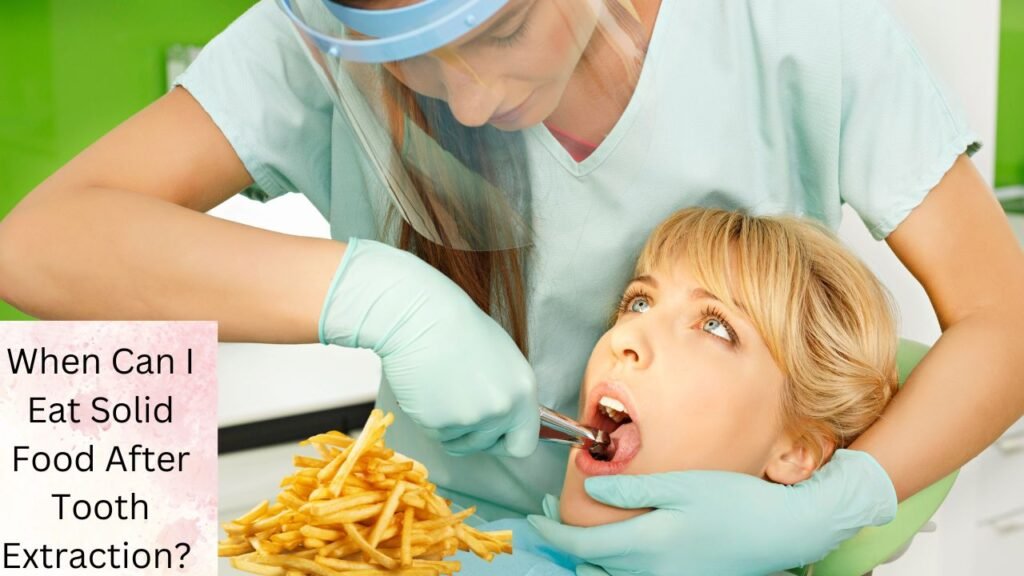
Tooth extraction is a common dental procedure, but knowing when and what to eat afterward can be confusing. If you’ve just had a tooth removed, you’re probably wondering: “When can I eat solid food again?” and “What should I avoid to ensure a smooth recovery?” This guide will answer these questions and more, providing a step-by-step approach to resuming a normal diet after extraction.
The Youtube video below: When Can I Eat Solid Food After a Tooth Extraction? by The Pro Dentist explains the recovery timeline and safe foods after tooth removal. It provides a helpful visual guide for viewers managing post-extraction care.
Understanding the Healing Process
The First 24-48 Hours: Post-Extraction Care
The Immediate Aftermath: After your tooth extraction, the first 24-48 hours are critical. During this time, your body starts forming a blood clot in the socket, which is crucial for healing. The clot acts as a natural bandage, protecting the underlying bone and nerves.
What to Expect:
- Swelling and Discomfort: It’s normal to experience some swelling and discomfort. Over-the-counter pain relievers can help manage this.
- Bleeding: Some minor bleeding is expected. Bite gently on a gauze pad to help stop the bleeding.
Initial Diet Recommendations: For the first 24-48 hours, stick to:
- Clear Liquids: Water, broth, and clear juices.
- Pureed Soups: Opt for smooth, lukewarm soups like vegetable or chicken noodle.
- Yogurt: A great source of protein and easy on the extraction site.
Day 3-7: Transitioning to Soft Foods
Gradual Introduction of Solid Foods: Around the third day, you can start incorporating soft foods into your diet. This gradual introduction helps prevent complications while ensuring you’re getting the nutrients you need.
Recommended Foods:
- Mashed Potatoes: Smooth and easy to swallow.
- Scrambled Eggs: Soft and rich in protein.
- Oatmeal: Gentle on the mouth and soothing.
- Soft Fruits: Applesauce, ripe bananas, and steamed vegetables.
- Tender Meats: Shredded chicken or fish that are easy to chew.
Foods to Avoid: During this period, avoid:
- Hard Foods: Nuts, chips, and any foods that require extensive chewing.
- Crunchy Foods: Popcorn, pretzels, and similar snacks.
- Sticky Foods: Caramel, gum, and chewy candies.
- Spicy Foods: These can irritate the extraction site and delay healing.
Nutritional Needs During Recovery
Why Nutrition Matters: Maintaining a balanced diet is essential for speeding up recovery. Focus on:
- Protein: Supports tissue repair (e.g., eggs, yogurt).
- Vitamins: Promote healing and immune function (e.g., fruits, vegetables).
- Minerals: Aid in overall recovery (e.g., leafy greens, dairy).
Examples of Nutritious Foods:
- Eggs: Packed with protein and easy to digest.
- Yogurt: Contains probiotics that can aid in digestion.
- Steamed Vegetables: Provide vitamins without being harsh on your healing socket.
Addressing Common Concerns
Can I Eat Ice Cream? Yes, ice cream can be soothing but avoid very cold or hard varieties. Opt for smooth and soft ice creams without chunks.
Can I Drink Coffee? It’s advisable to wait until at least 48 hours. Hot beverages can irritate the extraction site.
When Can I Eat Crunchy Foods Again? Generally, you can resume eating crunchy foods after one week, but listen to your body and follow your dentist‘s advice.
Tips for a Smooth Recovery
Eating Comfortably:
- Use Straws Carefully: If you use a straw, do so gently to avoid dislodging the clot.
- Avoid Talking Excessively: Minimize talking to avoid disturbing the healing area.
- Don’t Smoke: Smoking can hinder the healing process and increase the risk of complications.
Signs of Complications
Dry Socket: If you experience severe pain a few days after extraction, it might be a dry socket. Symptoms include:
- Intense Pain: Typically starting a few days after the procedure.
- Bad Breath: An unpleasant smell coming from the extraction site.
Infection: Signs of infection include:
- Fever: An elevated temperature.
- Swelling: Increasing or severe swelling around the extraction site.
What to Do: Contact your dentist immediately if you notice any of these symptoms to get appropriate treatment.
Conclusion
Understanding when and what to eat after a tooth extraction can make a significant difference in your recovery. Start with soft foods and gradually reintroduce solid items as healing progresses. Following these guidelines will help prevent complications and ensure a smoother, faster recovery. Remember, if you have any concerns or notice unusual symptoms, don’t hesitate to consult your dentist for personalized advice.
For more personalized recommendations and to ensure a successful recovery, consult your dentist.
Find Your Perfect Dentist
Book appointments with top-rated dentists in your area